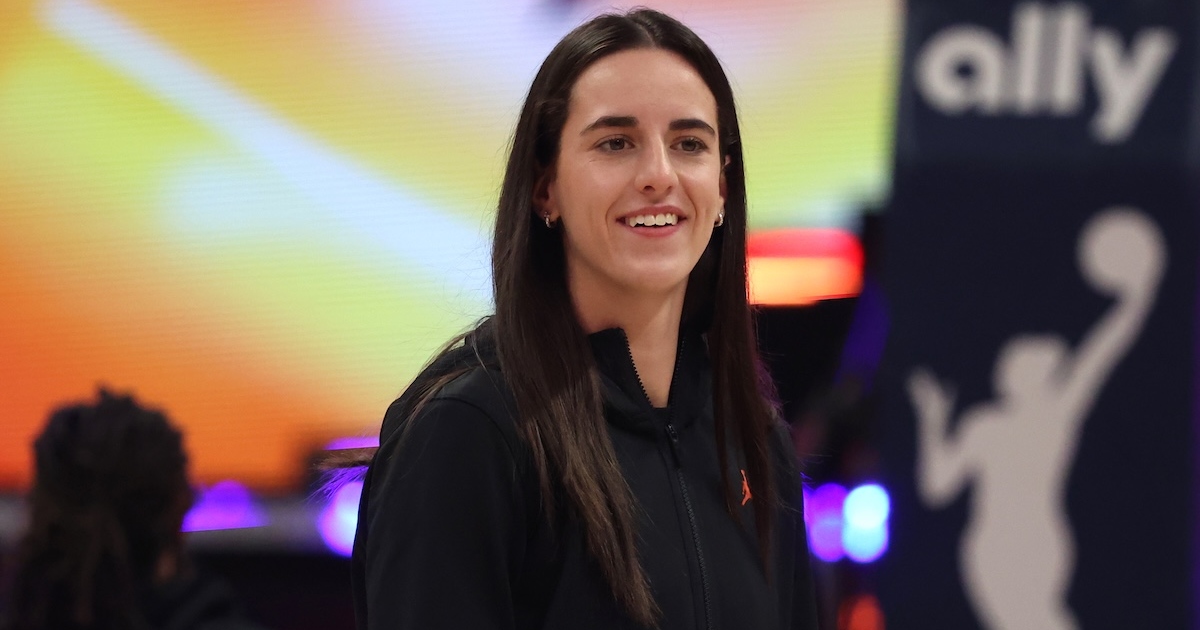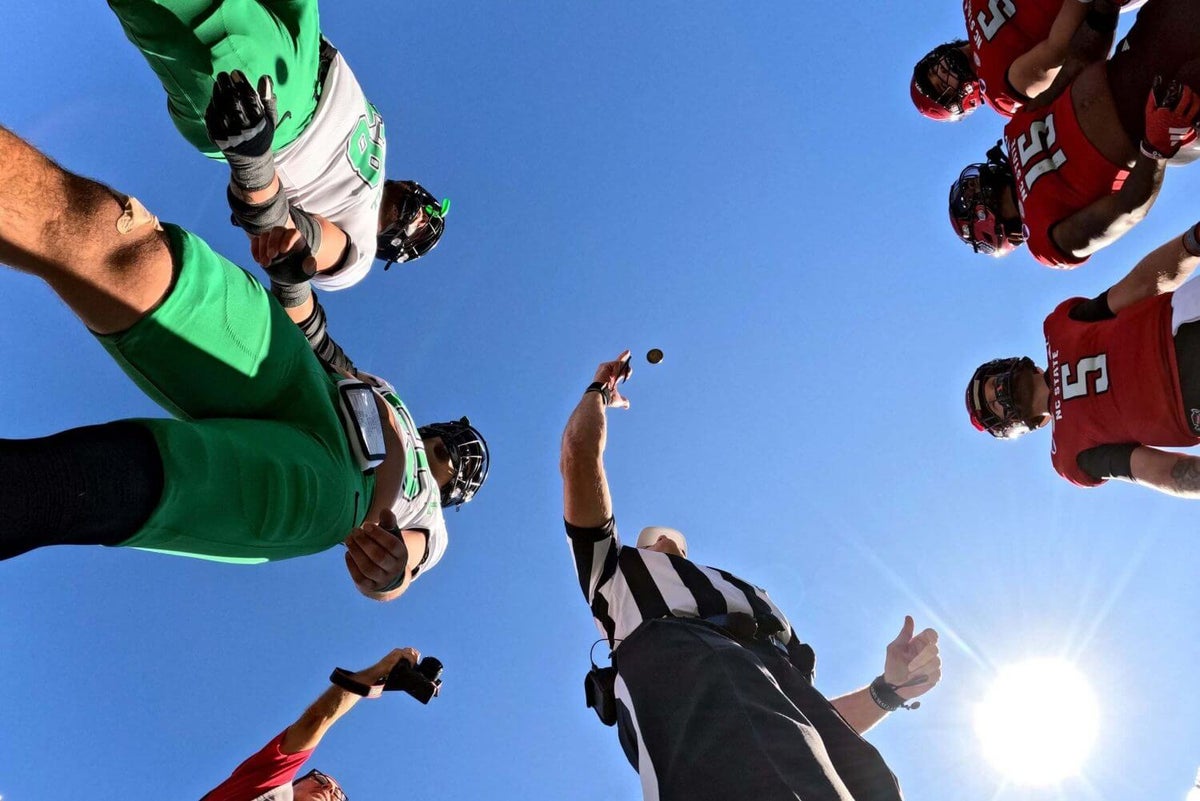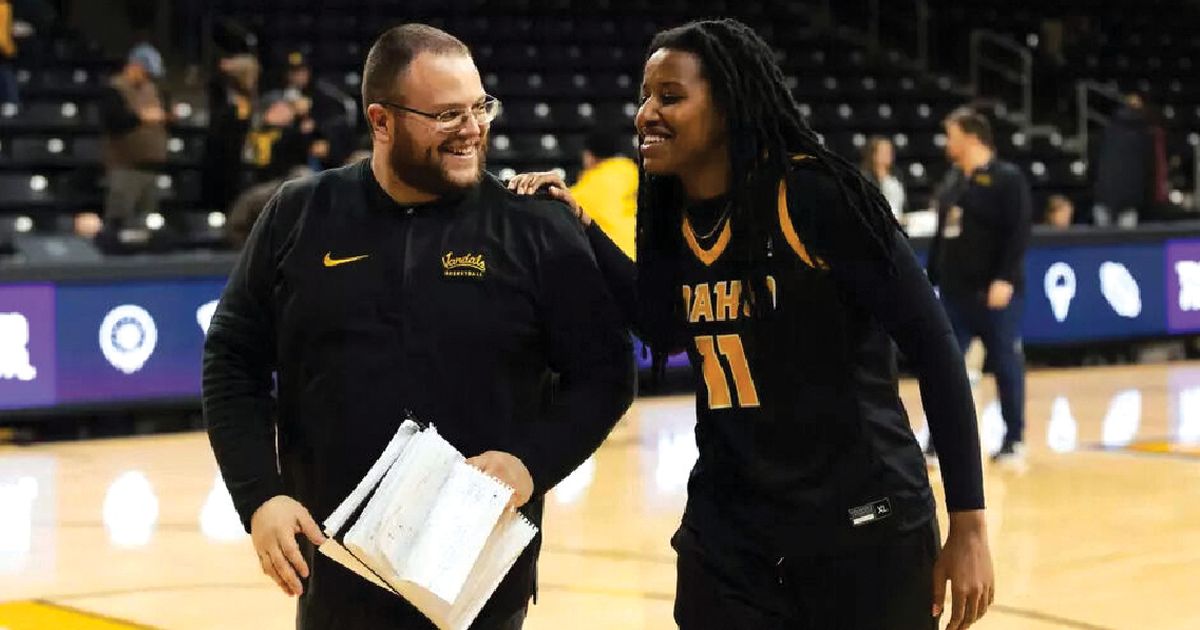

Arizona State athletic director Graham Rossini discusses the changing landscape in college sports Thursday at the Walter Cronkite School of Journalism and Communication. (Photo by Truitt Robinson/Cronkite News)
PHOENIX – Arizona State athletic director Graham Rossini was adamant that the turbulent collegiate landscape won’t negatively impact the university.
“We want all 26 of our sports to be able to continue to grow and thrive in this environment,” Rossini said Thursday.
“We’ve not had a conversation about moving off that.”
It’s a sentiment that a decade ago would have been commonplace for any top collegiate leader.
But with the recent House v. NCAA $2.8 billion settlement dispersing $20.5 million to each NCAA member school for direct athlete payment, Rossini’s commitment is not made without conviction.
“We no longer have 26 sports that operate largely like independent contractors,” Rossini said in a wide-ranging interview about the landscape of college athletics at the Walter Cronkite School of Journalism and Mass Communication. “They’re connected, they’re collaborating, they’re pushing each other in ways that are healthy and competitive.
“I get no more satisfaction than being on our head coaching group text.”
For the Big 12, its member schools will be empowered to carry out this athlete payment through a PayPal partnership announced Thursday.
“Pay for play” has been regulated and given an avenue. On Tuesday, schools can begin doling out money, and Rossini said ASU’s payment schedule will roll out July 10.
High revenue sports including football and men’s basketball will be the “heaviest recipients” of revenue sharing, Rossini said, but that isn’t preventing lower revenue teams from receiving due support.
“There’s a pathway where eventually every athlete at ASU could be on some form of athletic aid,” Rossini said. “We’ve added operational budget to all 26 sports. … This isn’t really isolation around football and men’s basketball.
“They’re certainly heavily involved in the (revenue) share distribution, but all 26 have a place at the university and we’ve really tried to be as diligent and aggressive in resourcing all of them as best we can, certainly including the female athletes.”
Continuing ASU’s track record as an international pipeline is also top of mind for Rossini, who mentioned France’s Léon Marchand, a four-time gold medal winning swimmer, and Canada’s Luguentz Dort, a 2025 NBA Champion with the Oklahoma City Thunder.
“We want to give all these athletes the same opportunities that they’re accustomed to,” Rossini said.
ASU has increased the availability of athletic scholarships in every varsity sport and the university is “focused on program endowments” to navigate challenges and risks posed by revenue sharing, Rossini said.
Of the $20.5 million ASU was allotted for the 2025-26 academic year, $2.5 million has been reserved for athletic aid. With more than 200 scholarships added this year alone and ASU blowing past its settlement funding, Rossini was not shy about throwing out a call-to-action for Sun Devil faithful.
“Our scholarship investment is significant, but we’re convicted that it’s the right way to put our dollars into the department,” Rossini said. “So, the call-to-action for all Sun Devil fans who may love some of our Olympic sports is, ‘Hey, find a way to plug in. Find a way to support this team.’”
Citing about 350,000 ASU alumni spread across Maricopa County, Rossini said that there are many local “connection points” to the university, but the international branches that blossom have their own value.
“It just sharpens our focus because we’re a very international university,” Rossini said when asked about current travel restrictions. “I do think there’s enormous value at our institution where if we have a volleyball player from Latvia, or we also have a women’s tennis player from Latvia, we also have students from Latvia.”
As much as an international footprint is something that ASU embraces, Rossini reaffirmed the department’s commitment to in-state talent.
From Sun Devils football coach Kenny Dillingham sending out Willy Wonka-inspired “golden tickets” to several top Arizona recruits to women’s basketball coach Molly Miller coining the hashtag “pipeline to paradise,” Rossini said current and future students have much more to look forward to than just the desert climate.
He said joining the Big 12, and the national exposure that comes with that, has made the ASU brand both accessible from a viewership perspective and one that developing athletes will want to play within.
“That makes me feel good that people are seeing the value of the ASU experience,” Rossini said. “It’s not only about NIL or the selfish input that an individual would get. It’s about being part of something bigger than yourself.
“I think we’re starting to reap the benefit of that.”
Just looking at ASU football, Rossini said broadcasting its games on FOX and ESPN saw an increase of about 100% year-over-year viewership. If you add in the Peach Bowl, viewership improved 353%.
As unique as “Pac-12 After Dark” was for West Coast fans, Rossini said the concept was hurting marketing opportunities for the school. Despite a low profile opponent in Texas State this past football season, for example, he said the ESPN primetime slot on a Thursday night gave the nation an early peek at what turned into a College Football Playoff-bound ASU team.
“Everybody’s getting a chance to watch us,” Rossini said. “They’re not behind a paywall or a regional sports network. And so everything that we try to do this last year and moving forward is designed around building the brand of Sun Devil athletics.”
For any current or future ASU athlete, Rossini had a clear message: You won’t be forgotten.
“If you’re a storyteller, come raise your hand … and let’s illuminate these incredible storylines all throughout our department,” Rossini said.
“That’s how we’re going to make sure that our athletes aren’t forgotten.”
1

























































